Oritori Ishigaki City Official Tourism Information Site
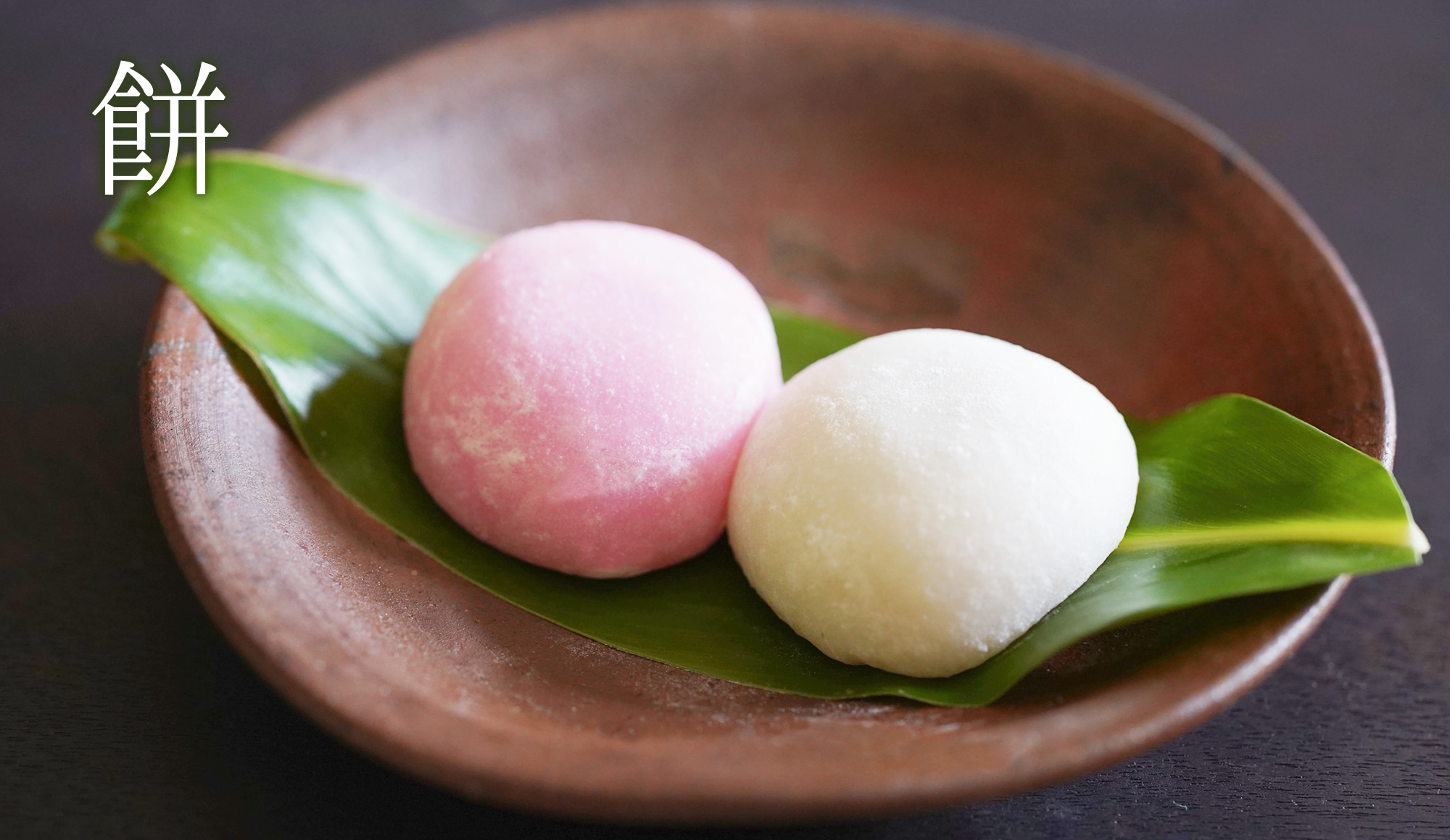
On Ishigaki Island, where annual events based on the lunar calendar have been carefully passed down, mochi rice cakes are an essential part of offerings. In addition to Obon and the Lunar New Year, on December 8th of the lunar calendar, people eat "muchi," mochi seasoned with brown sugar and purple sweet potato, wrapped in shell ginger and steamed, and on August 15th of the lunar calendar, "Fuchagi," mochi rice cakes covered in boiled red beans, are eaten. Mochi rice cakes have been used as offerings at celebratory occasions and as return gifts, and they continue to be loved by the islanders, retaining their traditional flavor.
At Tamagusuku Mochiya, which has been in business for 60 years, mochi-making begins at 3 a.m., in the pitch darkness before sunrise. Mother and son Kadekawa Tsuruko and her son Kadekawa Kiyoshi carefully handcraft mochi, Jimami tofu, muchi, and other products using traditional methods.
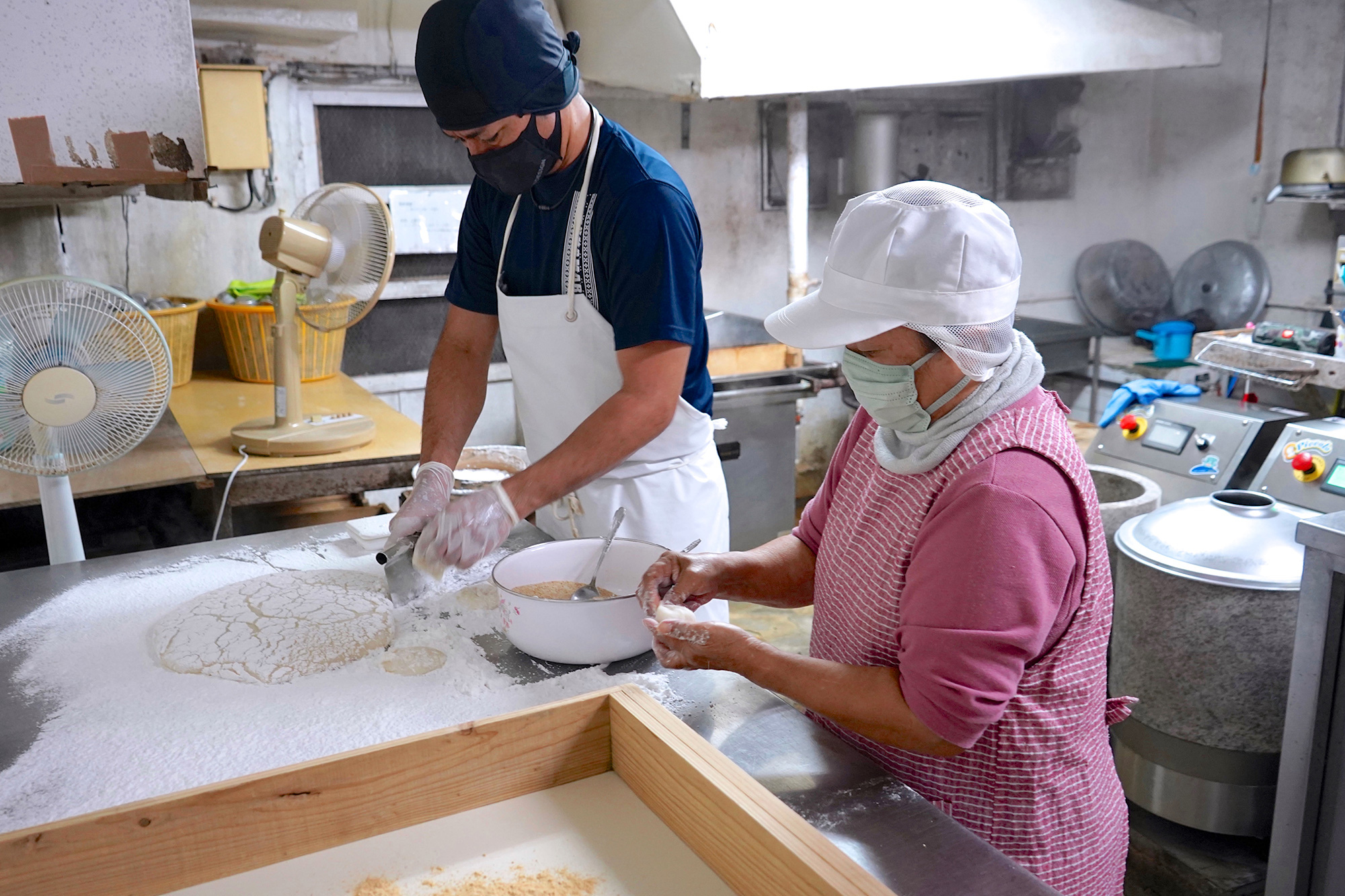
After Tsuruko's eldest daughter married and moved to Naha, they considered closing the mochi shop they had inherited from their predecessor. Kiyofumi runs a waterproofing paint business for buildings, but he couldn't let the mochi shop that had been passed down from his grandmother's generation disappear, so he made up his mind to continue working while taking over Tamagusuku Mochiya.
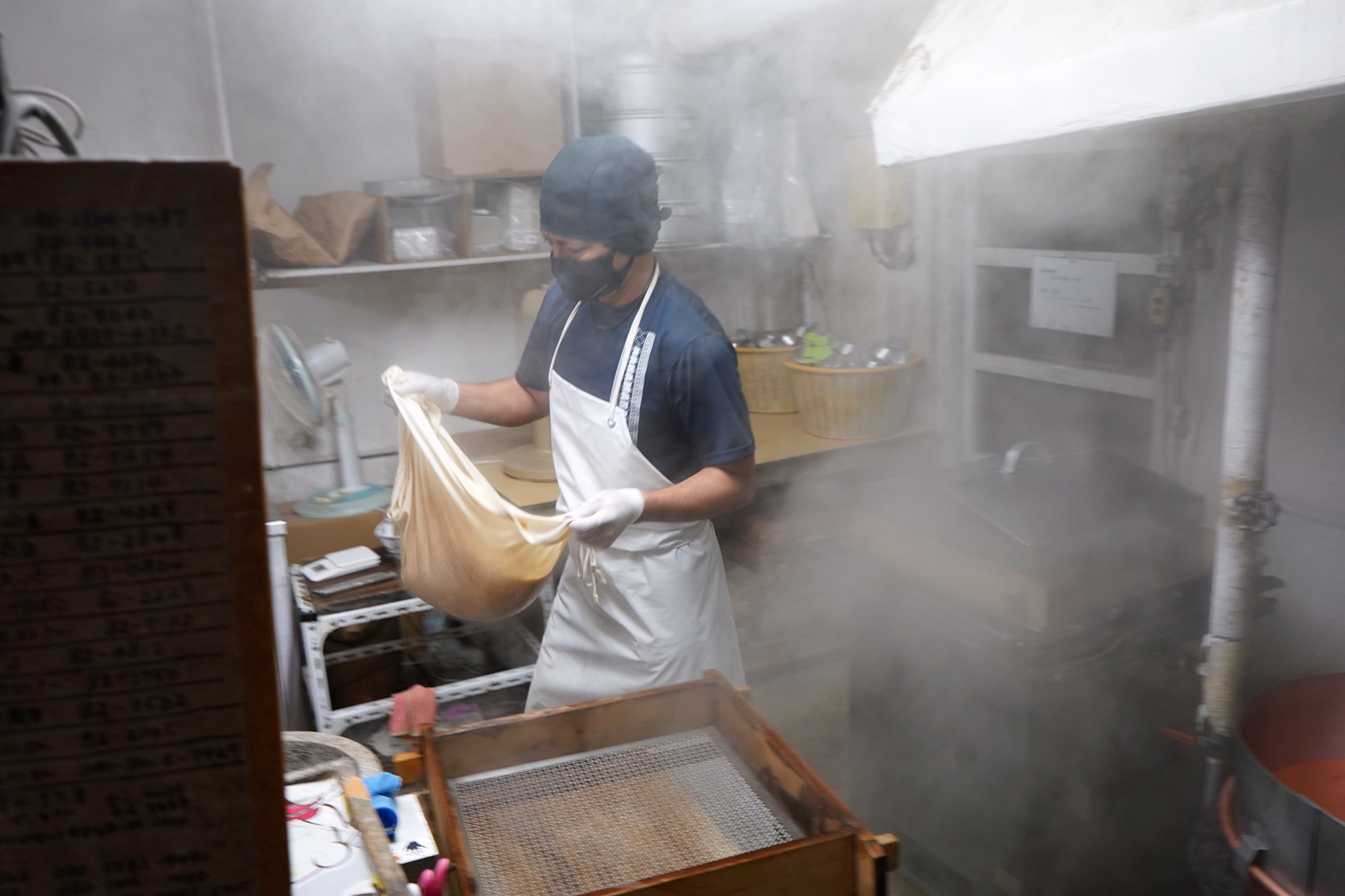
Kiyofumi works at the rice cake shop with Tsuruko every morning from 3:00 to around 11:00, then heads to the company.
"When I took over Tamaki Mochiya six years ago, I didn't understand the procedures, so I would come to the factory earlier to work. Now I've learned the procedures, eliminated waste, and become more efficient, so I can start work at 3 o'clock."
Tsurukko and Kiyofumi work briskly and without the slightest bit of hesitation or waste, and the two work in perfect harmony, allowing the work to proceed smoothly from one task to the next.
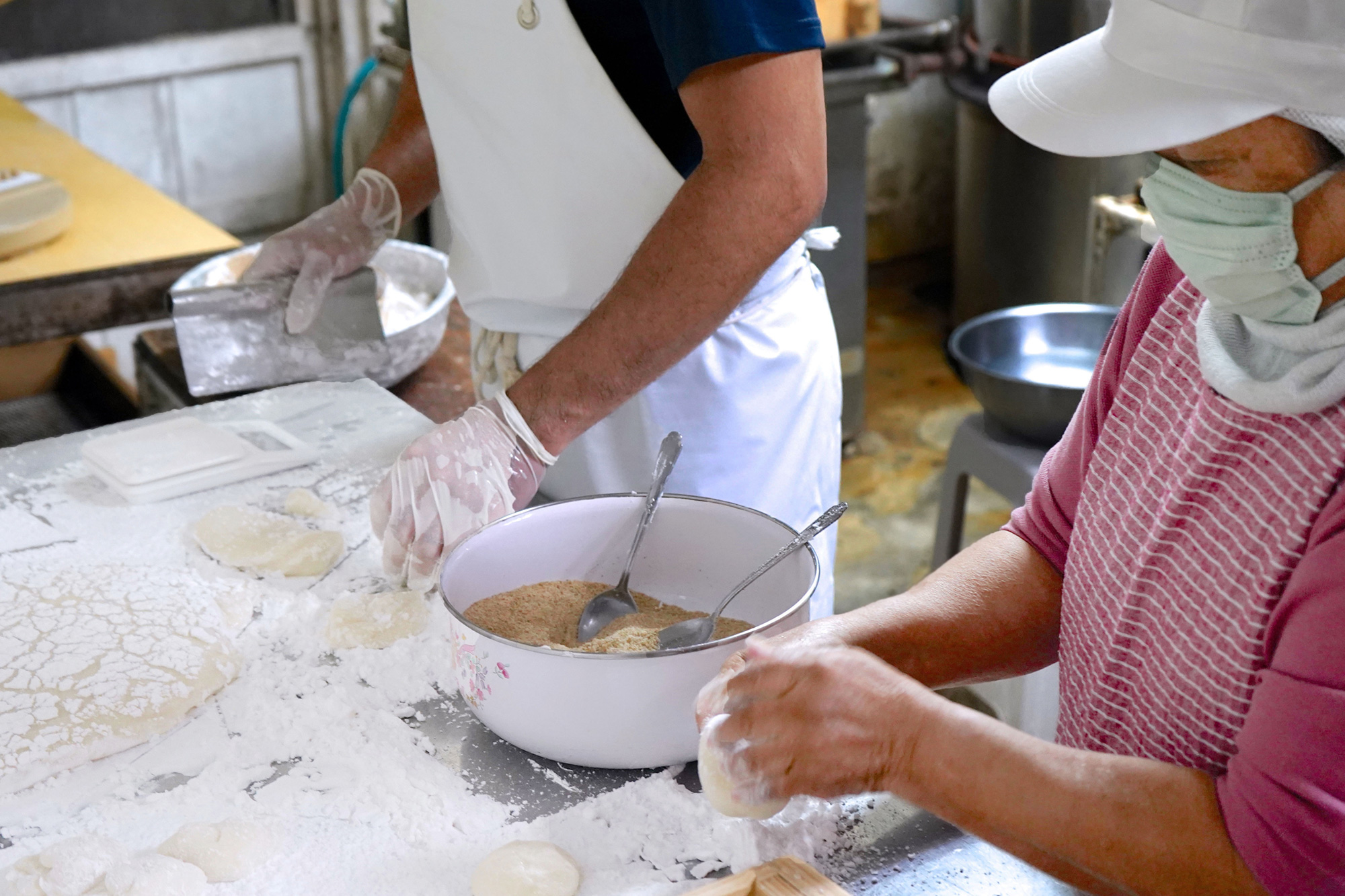

The glutinous rice is soaked in water, crushed into small pieces using a grinder, placed in a cloth bag, and weighted down to drain the water.
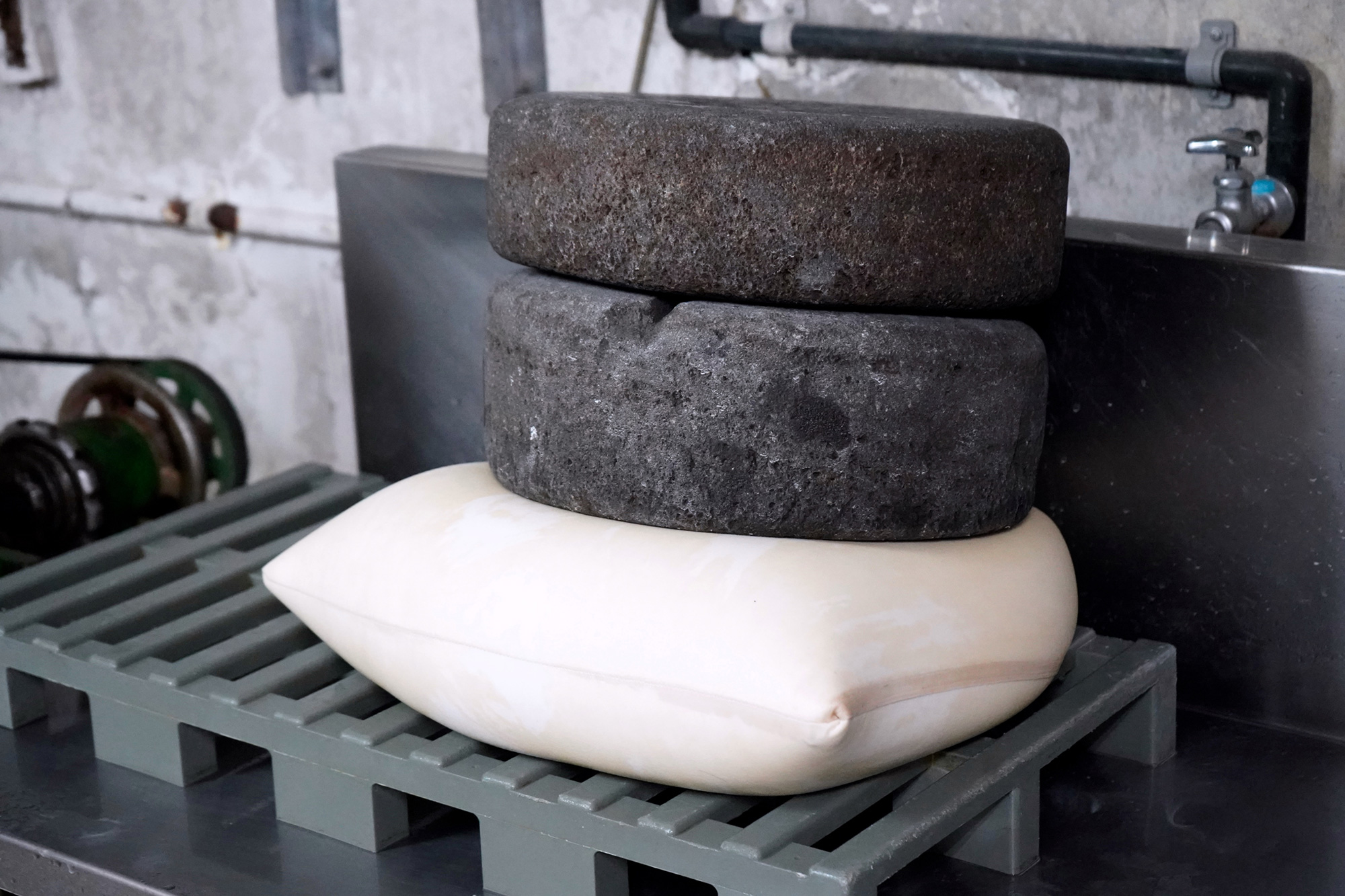
The glutinous rice is kneaded in a kneading machine, then steamed in a steamer, and finally kneaded in a mochi pounding machine to complete the product.
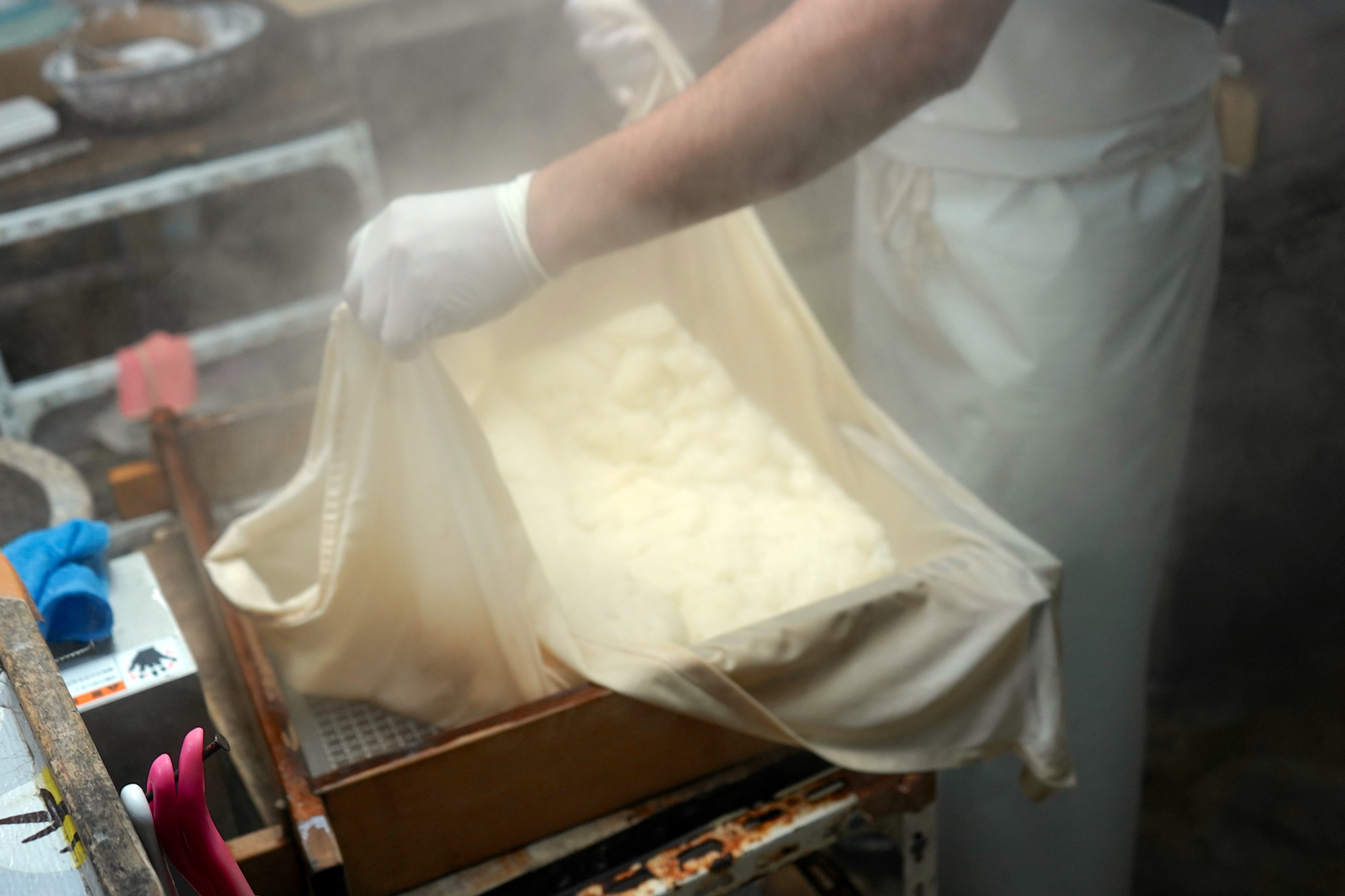
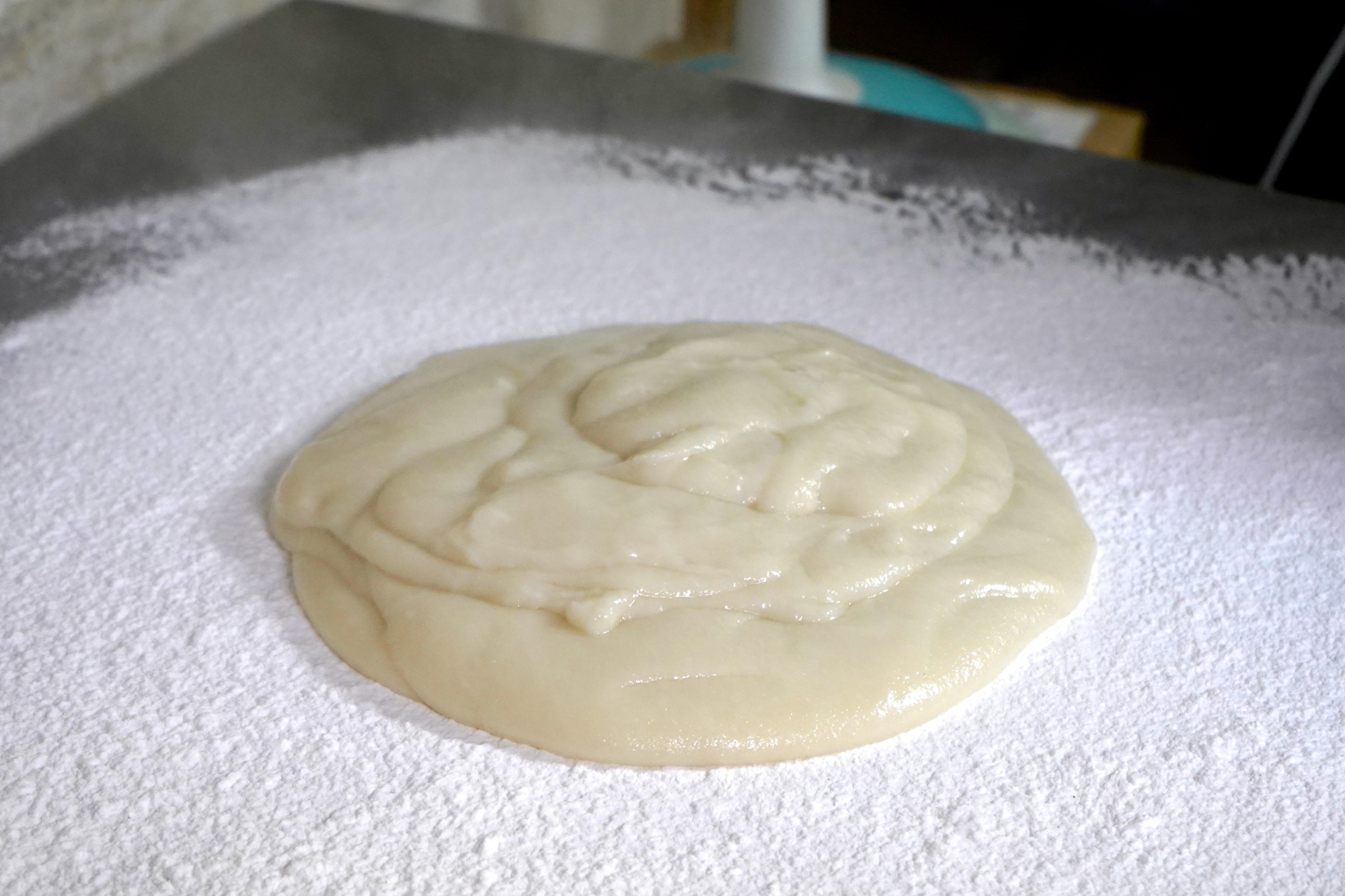
Tamaki Mochiya doesn't use glutinous rice flour, but raw glutinous rice. Using raw glutinous rice increases the amount of work required, but this effort is said to be the secret to making soft and delicious mochi. It seems that factories that use such a time-consuming production method are rare, both on Ishigaki Island and throughout the prefecture.
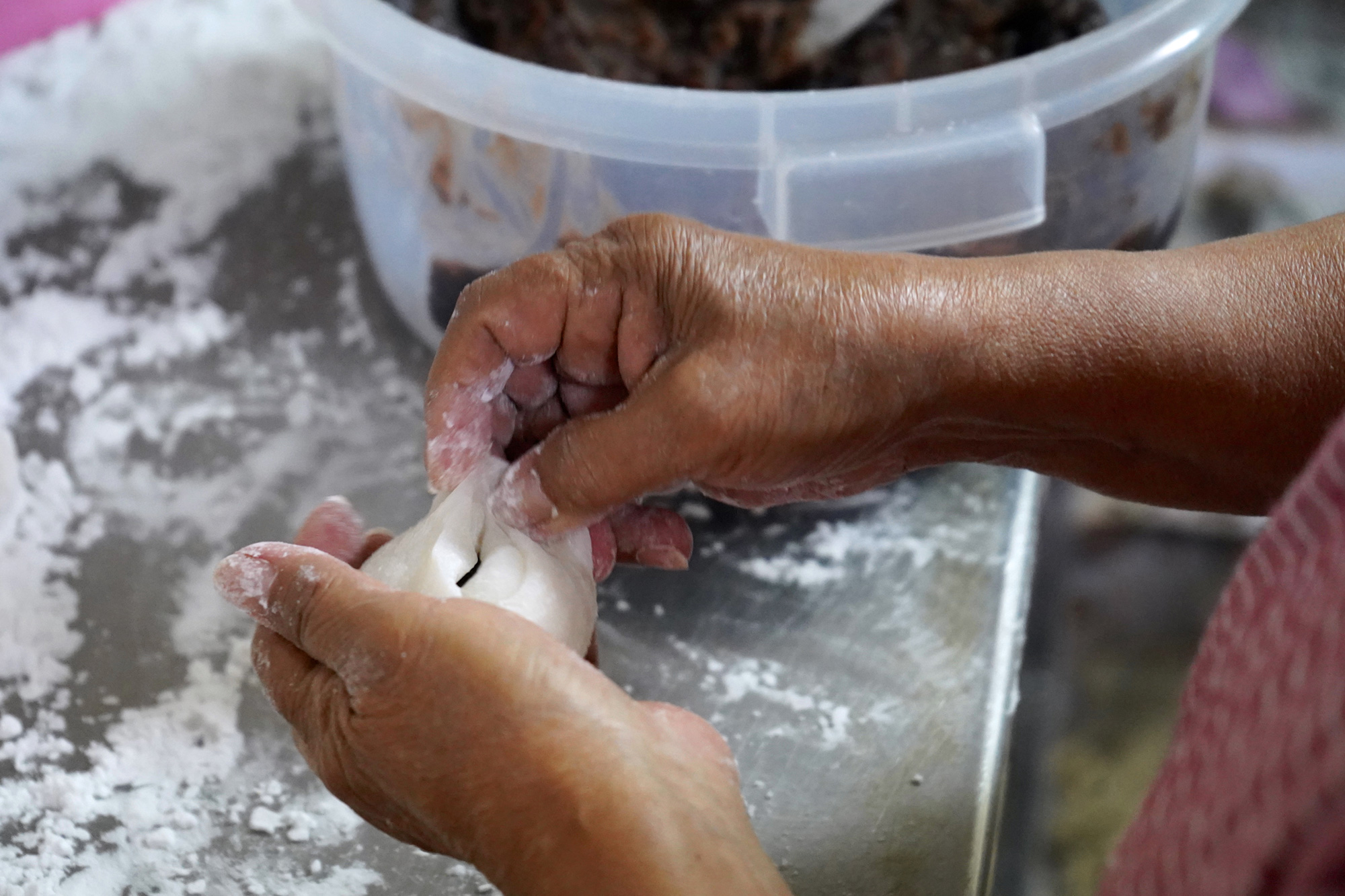
Fill each one with red bean paste or sesame paste and roll into balls.
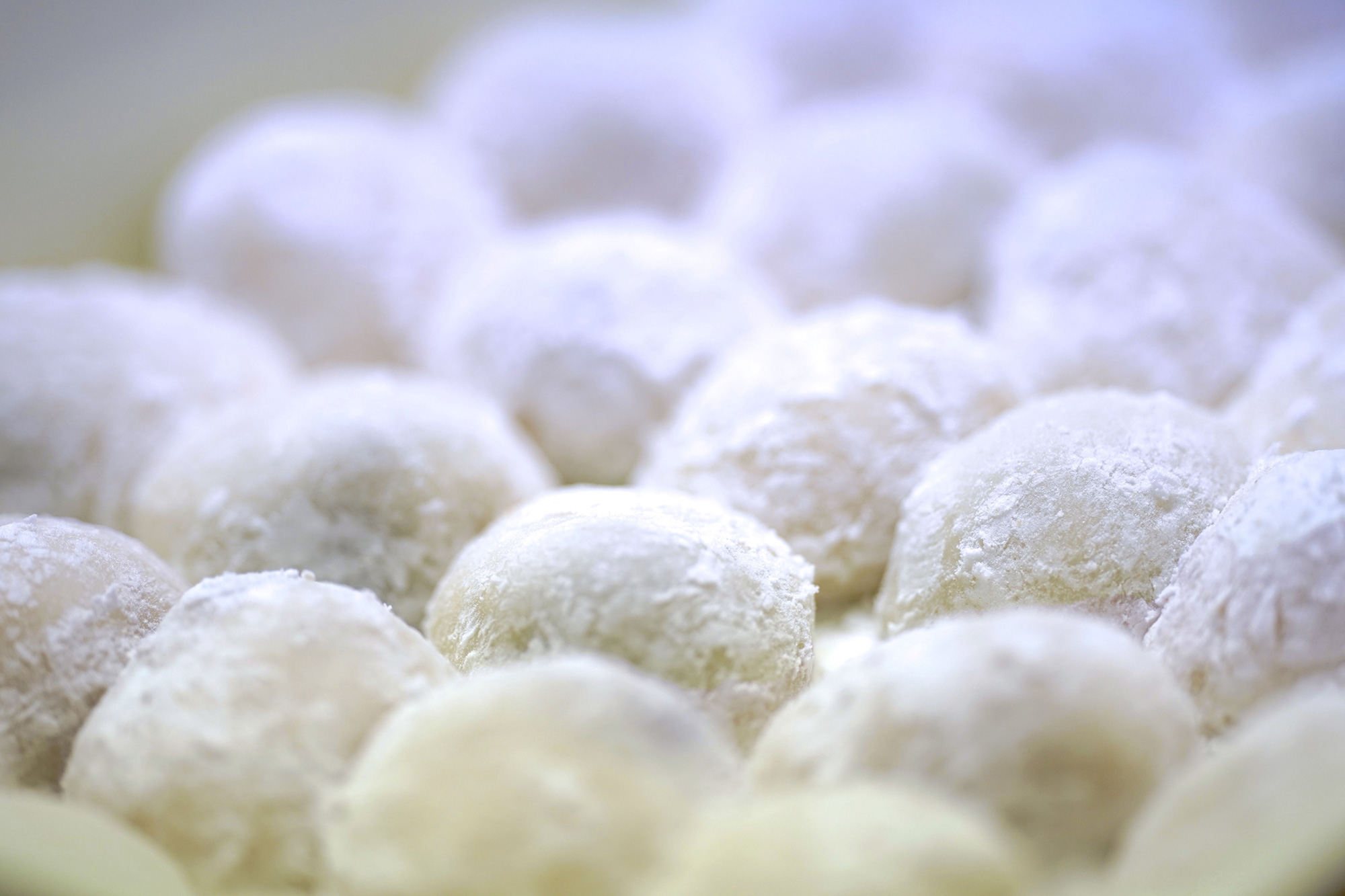
Once the mochi making is finished, Kiyofumi starts working without a break to prepare the Jimami tofu.

Peanut extract is squeezed out, mixed with arrowroot flour, and kneaded thoroughly while cooking. Once it has reached the right consistency, it is poured into molds one by one. This process is also done entirely by hand.
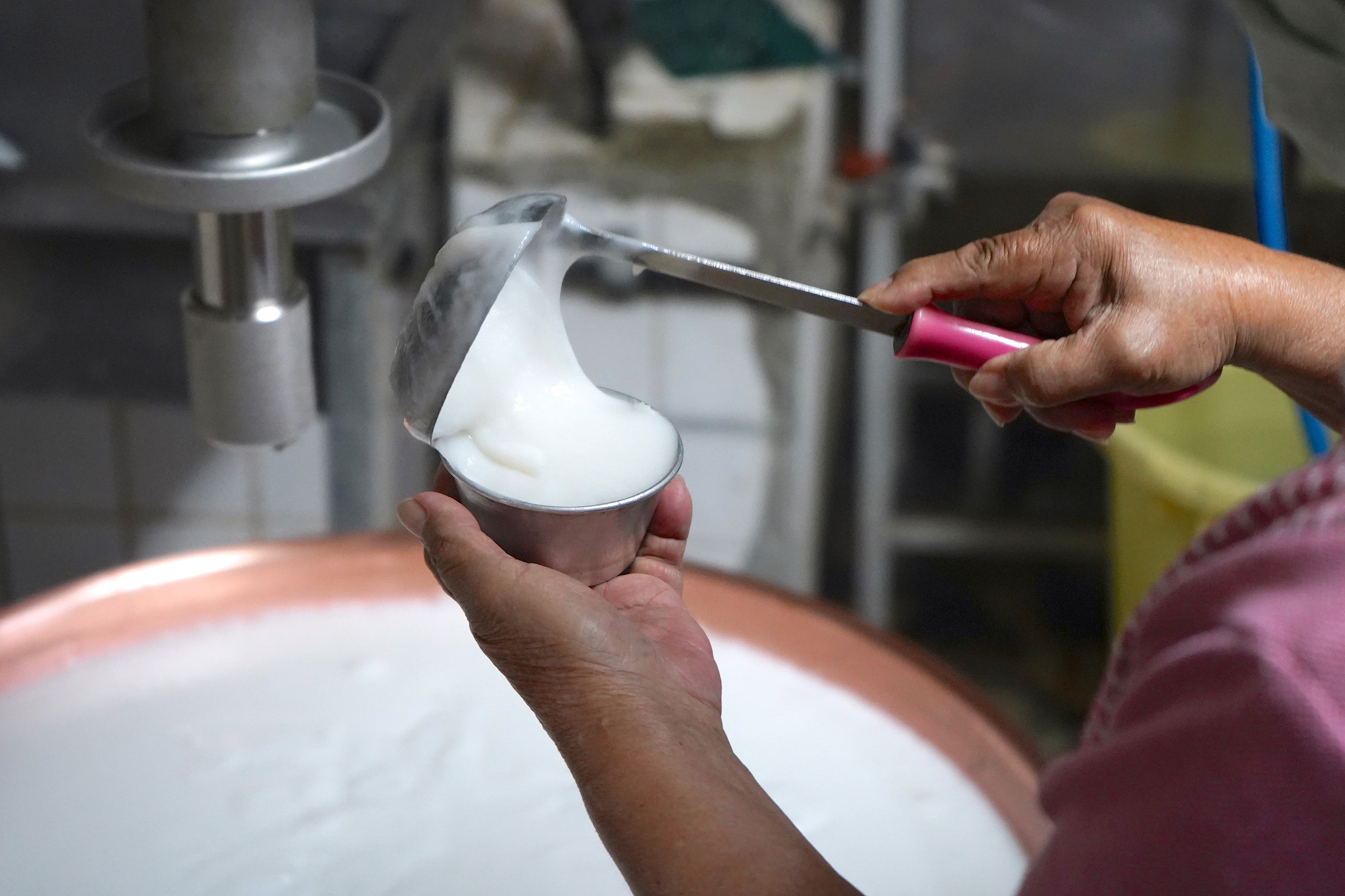
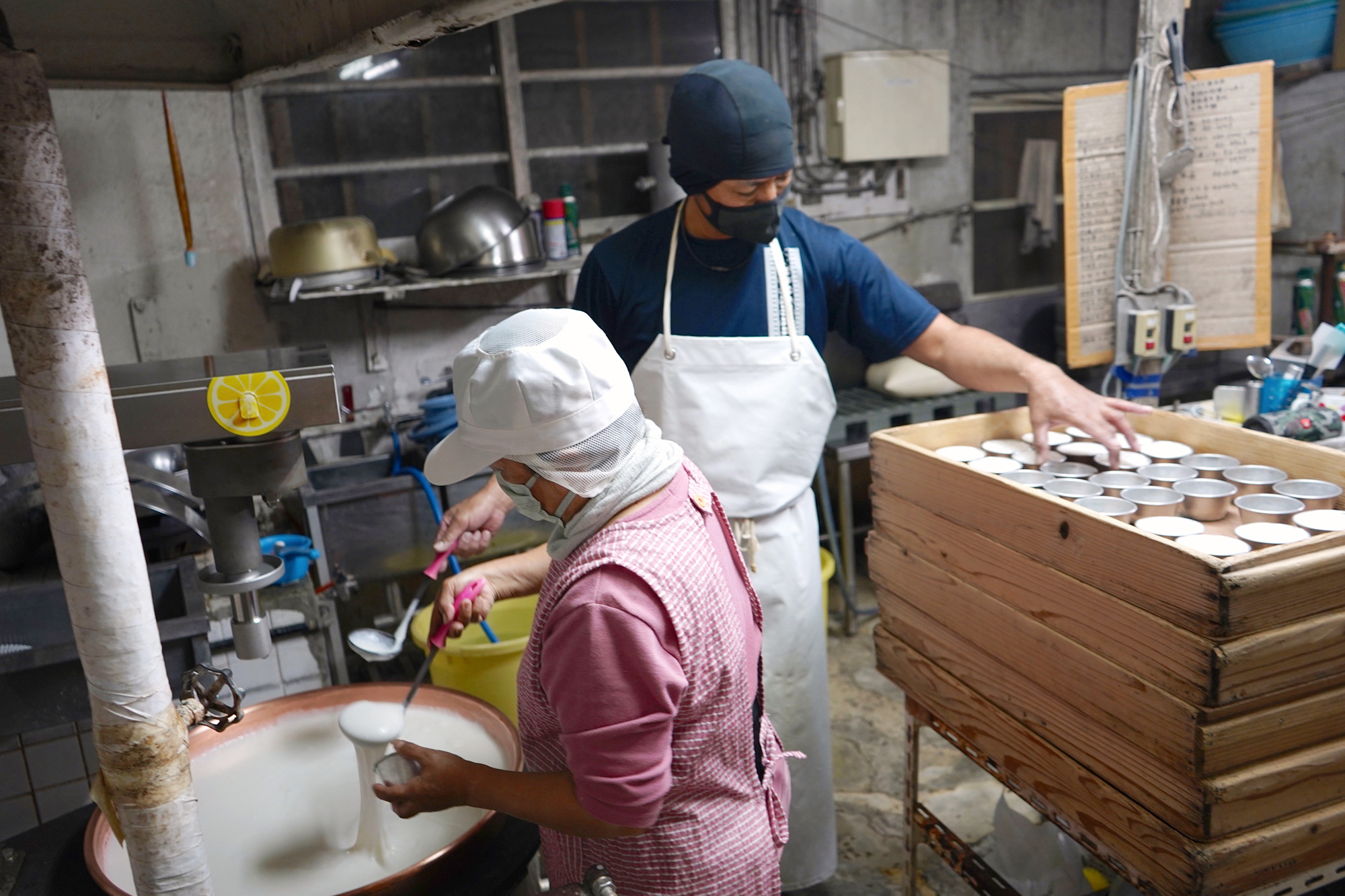
This rice cake with ground sesame paste has a traditional, mild flavor that can only be found on Ishigaki Island in Okinawa Prefecture.
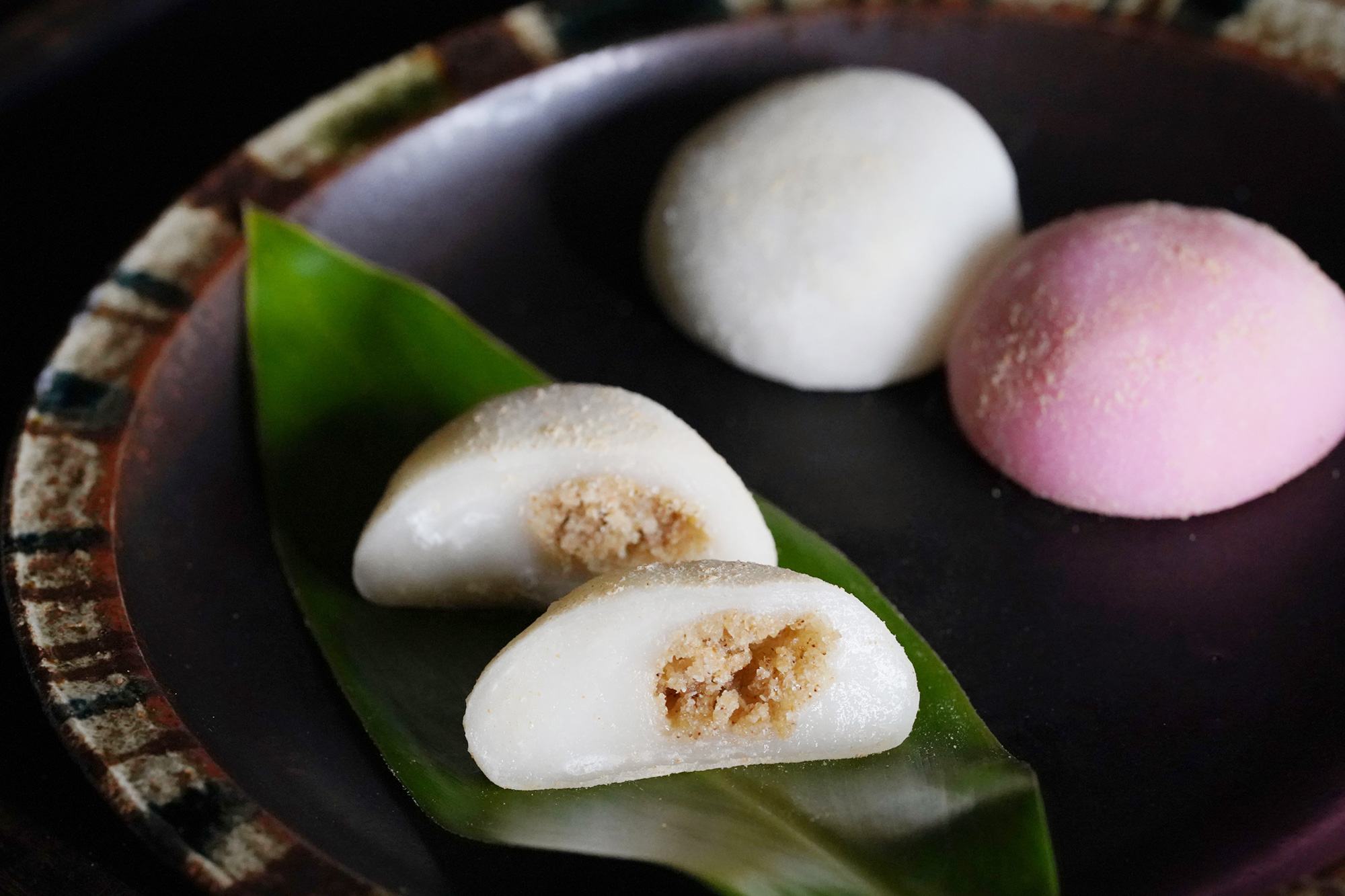
"Our future goal is to expand the company. If we can make the factory bigger and install more machinery, we will be able to increase our production volume. We also aim to sell our products in packaging that will last longer."

profile
Kiyoshi Kadegawa
Graduated from Ishigaki Second Junior High School
Get a job at a waterproofing company
2003 Waterproof painting company (established by Seikogyo)
This year marks the 20th anniversary of our founding
In 2017, he took over the family business, Tamagusuku Mochiya, and began working as both a waterproofing specialist and a mochi maker.